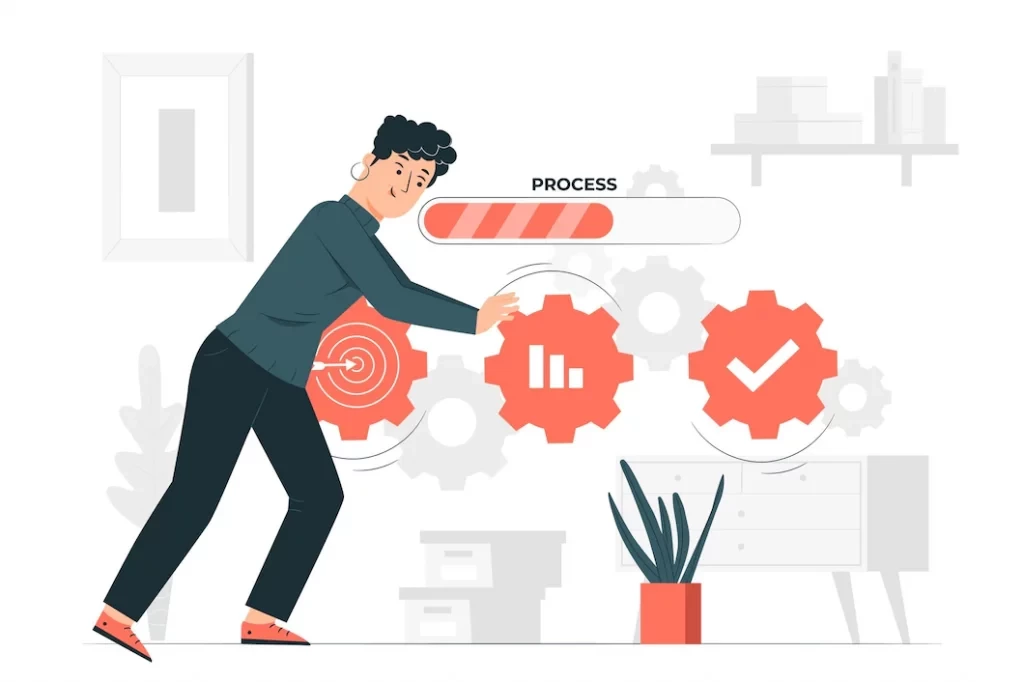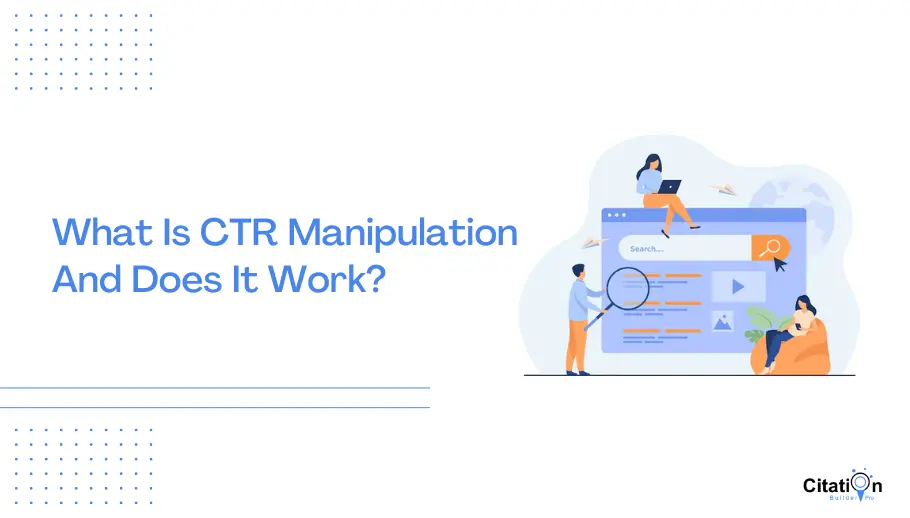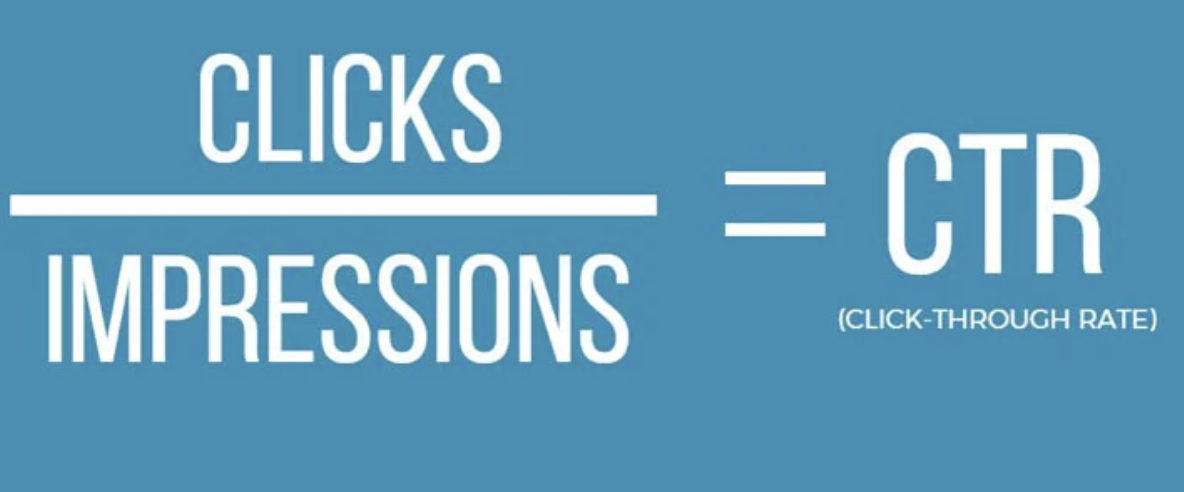Enhance Your Local Exposure with Our Trustworthy CTR Manipulation Service
Wiki Article
Mastering CTR Manipulation for Optimum Influence
In the digital landscape, mastering click-through price (CTR) manipulation is important for taking full advantage of the influence of your material. Understanding the crucial factors that influence CTR, such as target market engagement and timing, can encourage you to craft much more reliable strategies.Comprehending Click-Through Price
 Click-Through Price (CTR) is an essential metric in digital marketing that evaluates the performance of on-line promotions and material in driving individual interaction. It is calculated by dividing the number of clicks a promotion or web link gets by the number of times it is shown, then increasing by 100 to share it as a portion. A higher CTR indicates that the web content reverberates better with the target audience, thereby boosting the total efficiency of digital projects.
Click-Through Price (CTR) is an essential metric in digital marketing that evaluates the performance of on-line promotions and material in driving individual interaction. It is calculated by dividing the number of clicks a promotion or web link gets by the number of times it is shown, then increasing by 100 to share it as a portion. A higher CTR indicates that the web content reverberates better with the target audience, thereby boosting the total efficiency of digital projects.Comprehending CTR is important for marketers as it gives insights right into customer habits and preferences. A reduced CTR might signal that the web content is pertinent or not attractive to the audience, triggering a need for reevaluation of messaging, positioning, or style. Alternatively, a high CTR may highlight effective methods, assisting future marketing efforts.
Furthermore, CTR acts as a comparative device to examine different projects, enabling marketing professionals to enhance their strategy and assign resources effectively. By analyzing CTR fads, organizations can fine-tune their web content strategies, enhance audience targeting, and eventually attain better conversion prices. Hence, mastering CTR is important to boosting digital marketing effectiveness and driving sustainable development.
Trick Factors Influencing CTR
Several aspects play a substantial duty in determining the effectiveness of CTR in digital advertising. Among one of the most influential elements is the relevance of the material to the target market - CTR Manipulation Press Release. Promotions or web links that reverberate with the users' interests and needs are more probable to gather clicksOne more vital aspect is the top quality of the headings and summaries. Engaging and compelling titles can catch interest, while concise and clear meta descriptions can provide context that encourages customers to click through. In addition, the positioning of the material, whether it's above the fold or integrated into a feed, can dramatically impact exposure and, subsequently, CTR.
Aesthetic elements also add to CTR. High-quality images or videos can boost engagement, making the web content extra appealing. The use of call-to-action (CTA) switches plays a necessary function; persuasive and well-placed CTAs can encourage individuals to take action.
 Last but not least, audience division is crucial. Customizing messages to details demographics makes sure that the material reaches the ideal individuals, maximizing the chances of clicks. Understanding these key variables is critical for properly controling CTR in electronic advertising and marketing initiatives.
Last but not least, audience division is crucial. Customizing messages to details demographics makes sure that the material reaches the ideal individuals, maximizing the chances of clicks. Understanding these key variables is critical for properly controling CTR in electronic advertising and marketing initiatives.Reliable Techniques for Optimization
To maximize click-through prices efficiently, marketing experts need to implement a variety of targeted methods customized to their target market. Crafting compelling headings is vital; these ought to be concise, engaging, and consist of relevant key words that reverberate with the target group. A/B screening different headlines can disclose which variations capture focus most successfully.Premium pictures or video clips that align with the material can bring in individuals' attention and encourage clicks. CTAs must produce a feeling of seriousness or highlight an advantage, prompting instant activity from the target market.
An additional approach is optimizing advertisement placement and timing. Assessing target market behavior top article data can assist online marketers figure out the most effective times to deploy campaigns for maximum exposure. Individualizing web content based on customer choices and past interactions can cultivate a stronger link and improve CTR.
Last but not least, keeping mobile optimization is necessary. With boosting mobile usage, guaranteeing that web content is accessible and visually appealing on smaller screens can dramatically affect click-through prices. By accepting these techniques, marketing experts can efficiently improve their CTR and drive better project efficiency.
Tools for Tracking CTR
Tracking CTR efficiently is vital for recognizing the efficiency of advertising and marketing projects and making data-driven decisions (CTR Manipulation). To achieve visit the website this, a number of tools are offered that help with accurate monitoring and analysis of click-through ratesGoogle Analytics is one of one of the most extensively used tools, providing comprehensive understandings into customer behavior, including CTR for different pages and campaigns. Its ability to section data allows marketing experts to analyze performance throughout various demographics and website traffic sources.
Another useful device is SEMrush, which uses thorough reports on CTR for paid search campaigns. It enables customers to compare their CTR against sector criteria, supplying essential context for efficiency analysis.
For social networks projects, systems like Hootsuite and Sprout Social offer incorporated analytics that track CTR across various social channels. These devices not only give click-through data yet also enable for real-time surveillance of involvement metrics.
In addition, A/B screening devices such as Optimizely can assist marketers track CTR variations between various ad variations or touchdown pages, disclosing which components drive higher interaction. Using these devices makes sure marketers can properly check and refine their methods, ultimately maximizing the effect of their campaigns.
Examining and Adjusting Techniques
Although data collection is essential, evaluating and adjusting strategies based on click-through rate (CTR) insights is where true optimization occurs. A thorough evaluation of CTR information permits marketers to determine patterns, fads, and abnormalities that can inform calculated choices. This entails segmenting information by demographics, device types, and website traffic sources to determine what resonates with particular target markets.As soon as understandings are gathered, it is necessary to adjust strategies appropriately. For example, if a certain advertisement duplicate or aesthetic consistently underperforms, revising the message or creative elements can drive his explanation improvement. A/B testing serves as a practical method for examining the efficiency of these modifications by contrasting variations to see which generates a greater CTR
 In addition, timing and placement are essential elements. Assessing when and where ads are most efficient can lead to more targeted projects, making the most of exposure throughout peak interaction durations. Continuous tracking and repetitive adjustments guarantee that approaches remain aligned with progressing customer behaviors and preferences. Eventually, a data-driven technique to assessing and adjusting techniques will produce considerable gains in CTR, bring about enhanced overall marketing performance and ROI.
In addition, timing and placement are essential elements. Assessing when and where ads are most efficient can lead to more targeted projects, making the most of exposure throughout peak interaction durations. Continuous tracking and repetitive adjustments guarantee that approaches remain aligned with progressing customer behaviors and preferences. Eventually, a data-driven technique to assessing and adjusting techniques will produce considerable gains in CTR, bring about enhanced overall marketing performance and ROI.Conclusion
By applying efficient methods for optimization and utilizing proper devices for tracking performance, content designers can considerably enhance interaction. The integration of these components will guarantee that web content resonates with the target audience, making best use of impact in a competitive electronic landscape.In the digital landscape, mastering click-through price (CTR) manipulation is necessary for taking full advantage of the influence of your content.Click-Through Rate (CTR) is a critical metric in digital advertising and marketing that quantifies the efficiency of on the internet advertisements and content in driving individual interaction. A greater CTR shows that the content resonates more efficiently with the target audience, consequently boosting the total efficiency of electronic projects.
A reduced CTR might signal that the content is not attractive or pertinent to the target market, prompting a requirement for reevaluation of positioning, messaging, or layout. By analyzing CTR trends, businesses can improve their content techniques, enhance target market targeting, and inevitably attain far better conversion prices.
Report this wiki page